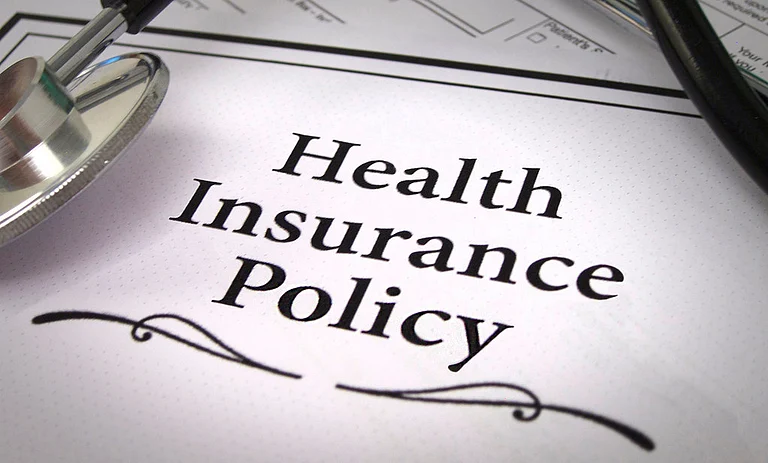Healthcare is becoming too expensive for citizens of India, so much so that many are even skipping getting medical treatments altogether. This is not a problem faced only by people experiencing poverty; the financial strain of high medical bills is cutting across classes, regions, and age groups.
Healthcare Affordability Crisis: More Indians Skipping Medical Treatments
A recent report has raised an important question: How long can individuals bear the financial burden of rising healthcare costs before it becomes truly out of their reach?
A recent survey by GOQii, an Indian fitness technology company, finds that 71.1 per cent of respondents report that healthcare costs have increased significantly, while 36 per cent say they have reduced the frequency of medical visits due to financial constraints. Whether it is a young professional juggling medical bills and rent or a retiree relying on limited pension funds, the financial strain is undeniable for all individuals.
The India Fit Report 2025 pinpoints a growing chasm between healthcare accessibility and financial security among Indians.
The grim reality of rising healthcare costs
The report, titled Beyond the Brink: Confronting India's Healthcare Affordability Crisis, notes that healthcare costs are rising faster than general inflation, outpacing income growth, and frequently turning medical access into a privilege rather than a right.
Medical inflation in India currently stands at 14 per cent (annually), the highest in Asia. For context, this could mean surgery or treatment that cost Rs 1 lakh last year could easily touch Rs 1.4 lakh this year without any improvement in your income or quality and additional services.
The insurance industry data shows that the average size of claims has gone up by around 11.35 per cent. This is also a reflection of the growing burden on families who are already grappling with stagnant wages and rising living costs.
Roughly 62 per cent of all healthcare expenses in India are still paid out-of-pocket by patients. Add another 23 per cent that comes from borrowing, and what you have is a system where 85 per cent of medical costs are funded either from personal savings or debt.
This means that a significant part of the population is paying, quite literally, out of their paycheck for every medicine, test, and hospital stay.
The rising costs are also taking a hit on preventive healthcare wherein regular check-ups or diagnostic tests have become financially unviable.
The Consequences?
While 12.3 per cent of respondents said they had delayed treatment due to cost, 6.6 per cent went a step further - they skipped necessary treatment altogether. When people are avoiding care to save money, it results in higher healthcare spending down the line. 36 per cent have reduced the frequency of their medical visits, likely as a cost-saving measure.
There’s also a gender lens to this issue. Survey data shows that 56 per cent of men said medical costs had gone up significantly, compared to just 15 per cent of women. That’s not because women are insulated from rising costs, but because in many households, men handle the financial transactions.
Women may be more involved in caregiving and less involved in bill payments, which could explain this gap in perception. But the gap in awareness comes with its own risks, because awareness is the first step in financial planning.
Insurance Isn’t Enough
Even among those who have insurance, the picture is not very different. The study shows that many respondents report that their policies don’t cover the procedures they need, or offer only limited reimbursement. High premiums, hidden exclusions, and inadequate coverage mean that insurance, meant to be a safety net, often ends in disappointment.
How are people responding to this?
About 24 per cent of respondents have increased their savings to prepare for medical emergencies.
Nearly 19 per cent are cutting back on essentials like groceries or education.
Some, 12.3 per cent are buying extra insurance
Around 4 per cent have had to borrow money to pay for treatment
Around 40.8 per cent of those surveyed say they have not yet made financial changes. This could mean they either have not faced a medical emergency yet or are underprepared to face one.
How concerned are we?
The concern is widespread as about 43 per cent of respondents are “very concerned” about how future healthcare inflation will affect their ability to afford treatment. Another 29 per cent are “somewhat concerned.”
Only a tiny fraction, 3.1 per cent (not concerned at all) and 1.8 per cent (somewhat unconcerned), feel confident that rising costs won’t impact them significantly.
The reasons for rising healthcare costs are well-known: soaring medicine prices, expensive private hospital treatments, unavailability at public hospitals, and limited insurance penetration.
More people will be pushed into delaying or forgoing medical treatments, leading to worse health conditions, a spike in mortality rates, and an increasing financial burden on families.
The study raises an important question: How long can individuals bear the financial burden of rising healthcare costs before it becomes truly out of their reach?
Buy Outlook Money March 2025 Magazine Issue on Amazon Here.


